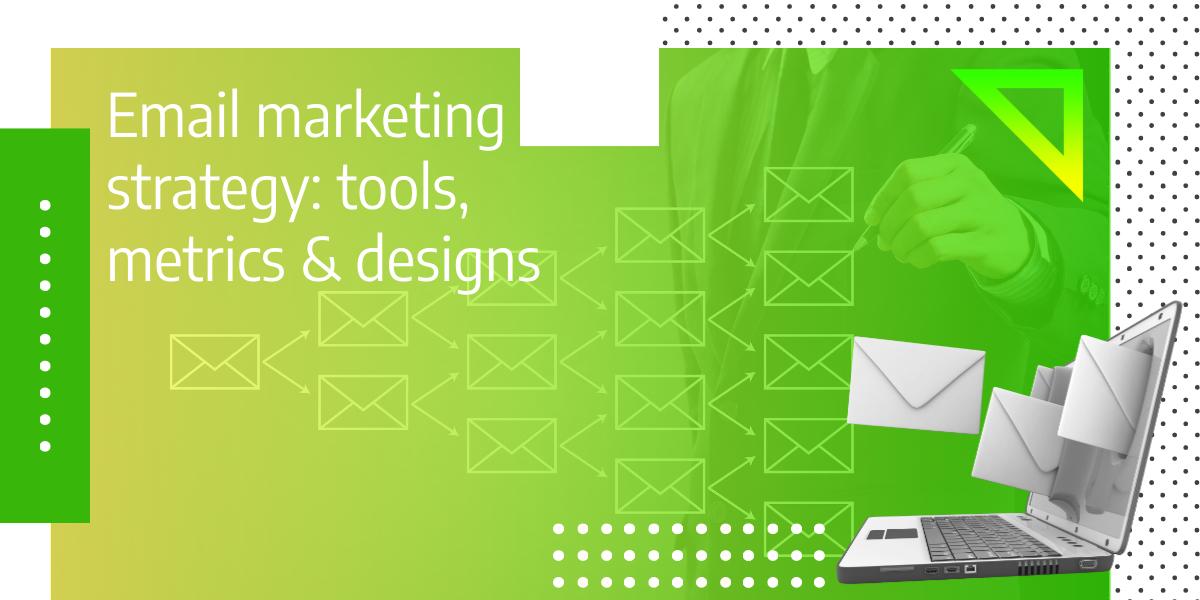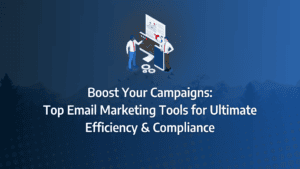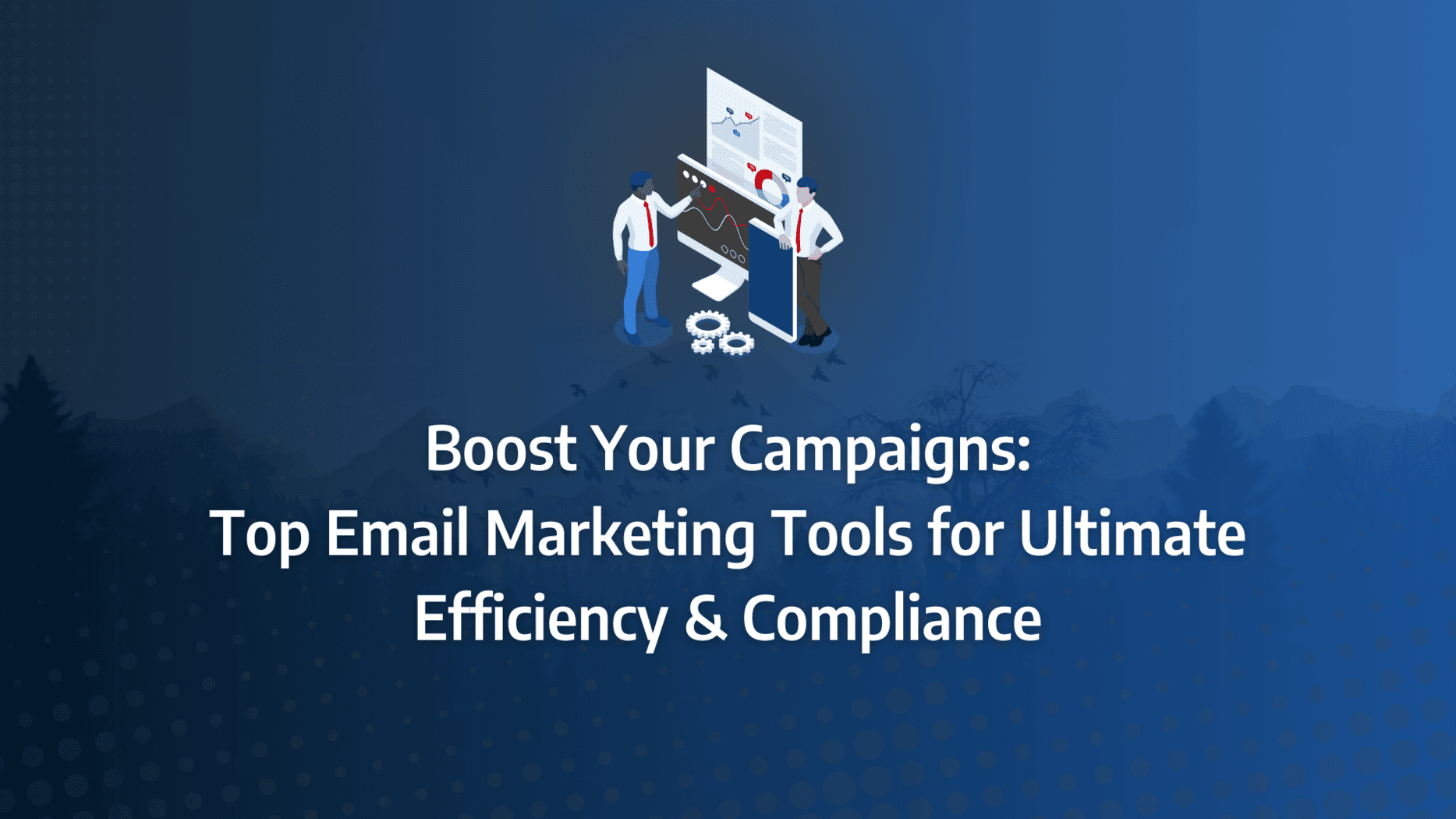Struggling to get the engagement and conversions you need from your email marketing efforts? You’re not alone. Many businesses find it challenging to cut through the noise and truly connect with their audience. But what if you could transform your email strategy to not just reach your audience but to engage them so effectively that they take action—every time?
In this post, we’re going to walk you through proven, step-by-step methods that will elevate your email marketing strategy to new heights. From growing your email list to optimising click-through rates, every tactic we discuss is designed to help you achieve maximum engagement and conversion.
- Set Clear and Specific Goals: Establishing well-defined objectives, such as increasing open rates or growing your email list, is crucial for measuring the success of your email marketing campaigns.
- Personalise Your Emails: Use segmentation to tailor your messages to specific audience groups, improving relevance and engagement.
- Optimise Click-Through Rates (CTR): Enhance your email designs, craft compelling CTAs, and A/B test your content to boost CTR.
- Grow Your Email List: Implement strategies like loyalty programs, product deals, and re-engagement campaigns to expand and maintain a high-quality email list.
- Leverage Automation: Automate your email marketing efforts to save time and ensure consistent communication with your audience.
- Integrate Social Media: Connect your email campaigns with social media platforms to amplify reach and drive more traffic to your website.
- Maintain Email List Hygiene: Regularly clean your email list by removing inactive subscribers to improve deliverability and campaign performance.
- Use Measurable Metrics: Monitor key metrics such as open rates and click-through rates to continuously refine and improve your email marketing strategy.
What are key goals to establish for email marketing campaigns?
Establishing clear and specific goals is the foundation of a successful email marketing strategy. These goals, which may include email personalisation, email list growth, lead nurturing, increased open rates, and enhanced brand awareness, serve as the compass guiding your email campaign strategy. Defining these objectives before launching your campaigns is essential, as they provide a framework for measuring the performance and effectiveness of your email marketing efforts.
1. Grow Your Email List
Expanding your email list is a critical objective within any email marketing strategy. A larger, more targeted list can lead to significant improvements in click-through rates, customer engagement, and lead generation.
To achieve this goal, you can employ a variety of email marketing techniques such as offering loyalty programmes, product deals, or surveys. Additionally, creating compelling calls-to-action (CTAs) and incorporating landing pages can effectively capture new subscribers. Managing your email list through segmentation—based on demographics, interests, and purchasing history—along with sending re-engagement emails, ensures that your list remains active and relevant.
2. Increase Your Email Click-Through Rate (CTR)
Boosting your email click-through rate is another crucial goal within your email engagement strategy. Monitoring and improving your CTR helps determine whether your content is resonating with your target audience.
To enhance your CTR, consider integrating visual content, using long-tail keywords, and conducting A/B testing. Custom landing pages tailored to specific campaigns can also drive more targeted traffic, further improving this key metric.
3. Grow Your Email Open Rate
Your email open rate provides insight into how many recipients are opening your emails, making it a vital metric to track. Setting a goal to increase your open rate can help identify and rectify issues such as ineffective subject lines, poor personalisation, overly broad segmentation, or a lack of mobile optimisation.
There are several email marketing techniques to improve open rates, including A/B testing of subject lines, personalising content, offering discounts or free offers, addressing customers by their first name, and using opt-in forms to ensure you’re reaching an engaged audience.
4. Clean Your Email List
Regularly cleaning your email list is essential for maintaining the health of your email marketing strategy. By managing bounce rates, utilising email automation, and removing inactive subscribers, you ensure that your emails are delivered to an engaged audience, thereby improving overall campaign performance.
Maintaining a clean email list not only enhances deliverability but also provides more accurate data for measuring the success of your campaigns, helping you make informed decisions and adjustments as needed.
What Matters Most?
Engaging readers through storytelling is essential for fostering emotional connections that lead to higher engagement rates. Clients often find that this strategy enhances brand loyalty significantly. Developing a clear email marketing strategy aligned with business goals ensures that each campaign contributes meaningfully, typically resulting in more coherent messaging. Furthermore, prioritising audience segmentation allows us to tailor our communications, which resonates more effectively with different customer segments and improves conversion rates.Get In Touch
Six Key Objectives to Achieve with Your Email Marketing Strategy
Aligning your email marketing objectives with your overall goals is essential for driving meaningful results from your campaigns. Here are six key objectives that your email marketing strategy can help you achieve, each contributing to the overall success and effectiveness of your email efforts.
1. Improve Return on Investment (ROI)
A well-executed email marketing strategy can significantly boost your ROI. This is achieved through the strategic use of email marketing techniques such as automation, integration with social media platforms like Facebook and Instagram, and hyper-personalisation. These tactics, combined with the cost-effectiveness of email marketing, contribute to enhanced web traffic and ultimately, a higher return on investment.
2. Promote Content Effectively
Email marketing is a powerful tool for content promotion. Whether you’re sharing loyalty programmes, blogs, newsletters, or event information, email provides a direct line to your audience. To maximise the impact, employ email marketing techniques like personalising content, growing your email list, ensuring mobile-friendly email design, and sending out regular updates such as weekly blog posts and newsletters.
3. Strengthen Brand Awareness
Enhancing brand awareness is a critical objective within any email campaign strategy. There are several effective email marketing techniques to bolster your brand’s presence, including the use of opt-in forms, sending welcome emails to new subscribers, and segmenting your email list based on demographics, purchasing history, and product interests. Incorporating clear calls-to-action (CTAs) within your emails further reinforces your brand’s visibility and engagement.
4. Generate New Leads
An effective email marketing strategy is instrumental in lead generation, bringing new customers to your business. To achieve this, you can leverage email marketing techniques such as crafting compelling subject lines, maintaining a clean and updated email list, using automation to streamline communications, and offering gated content like ebooks, webinars, and reports. Additionally, A/B testing can help you refine these elements to maximise their impact.
Source: Sopro
5. Enhance Customer Retention
Retaining customers is a key component of a successful email engagement strategy. By employing methods such as sending welcome emails, offering loyalty programmes (including early bird offers, discounts, and promotional codes), conducting email surveys, and issuing timely reminders, you can keep your customers engaged and loyal to your brand. These practices not only improve customer retention but also make your customers feel valued and appreciated.
6. Drive Website Traffic
A well-planned email marketing strategy can be a powerful driver of web traffic. To boost traffic, consider implementing methods like regularly cleaning and updating your email list, segmenting your audience for more targeted communications, integrating your email campaigns with social media platforms such as Facebook, LinkedIn, Twitter, and Instagram, and creating visually appealing, promotional newsletters that entice recipients to visit your website.
What are common pitfalls to avoid in my email marketing strategy?
Even the most well-crafted email marketing strategy can be undermined by common pitfalls that diminish its effectiveness. Here are five critical email marketing techniques to avoid in your email campaign strategy to ensure that your efforts yield the best possible results.
1. Image-Only Emails
Relying solely on image-based emails can significantly hinder your email marketing strategy. Image-only emails are prone to several issues, such as ending up in spam folders, slow load times, and being blocked by customers who have disabled images in their email settings. Additionally, they may not be mobile-friendly and can make it difficult for recipients to find your emails through keyword searches.
To avoid these pitfalls, balance your visual content with text to ensure that your emails are accessible, searchable, and engaging across all devices.
2. Overloading with Call-to-Action (CTA) Buttons
While CTAs are essential in driving action, including too many within a single email can overwhelm your audience and dilute your message. This common mistake can lead to confusion and reduced effectiveness in your email engagement strategy.
To optimise your CTAs, consider conducting A/B testing to measure their performance. Implementing click heat maps can also provide insights into which CTAs are most effective, enabling you to streamline the number of CTAs in your emails and enhance clarity.
3. Non-Mobile-Friendly Email Templates
In today’s mobile-centric world, neglecting mobile optimisation in your email templates is a critical error. Emails that are not mobile-friendly can alienate a large portion of your audience, as many users now access their emails via smartphones and tablets.
There are numerous email marketing tools available, such as Campaign Monitor, Sendinblue, Mailchimp, and Mail Designer 365, which offer customisable, mobile-responsive templates. Leveraging these tools will ensure that your emails are accessible and appealing on any device.
4. Hiding the Unsubscribe Link
Concealing the unsubscribe option from your recipients can damage your brand’s reputation and lead to poor customer experiences. It can also negatively impact customer loyalty and retention, as it signals a lack of transparency.
By clearly displaying the unsubscribe link, you not only comply with best practices and regulations but also gain valuable feedback from those who choose to opt out. This approach can help you refine your email marketing strategy and prevent your emails from being marked as spam.
5. Lack of Branding in Emails
Failing to incorporate consistent branding in your emails can confuse recipients and diminish the impact of your email campaign strategy. Without clear branding, customers may not recognise the sender, reducing the likelihood of engagement.
To resolve this issue, ensure that your emails consistently feature your brand’s logo and use eye-catching imagery that aligns with your overall branding. This consistency reinforces brand recognition and strengthens the connection between your emails and your brand identity.
Our Tactical Recommendations
Experimenting with subject lines while analysing A/B test results is vital for optimising open rates. Clients often discover that this approach reveals what truly captures attention. Implementing automated workflows for nurturing leads streamlines communication, ensuring that timely follow-ups keep prospects engaged. Additionally, closely monitoring deliverability metrics is crucial for maintaining a positive sender reputation, which is key to the long-term success of email campaigns.Get In Touch
How can I effectively increase my email click-through rate & open rates?
Developing a robust email marketing strategy is essential for driving success in B2B marketing. Below are some innovative email marketing techniques to help you optimise your email campaigns and achieve your marketing objectives.
1. Clearly Outline Your Email Marketing Objectives
Defining clear email marketing objectives is the first step in creating an effective strategy. These objectives serve as the foundation for your campaigns and guide your decision-making. Consider focusing on the following six objectives:
- Brand awareness
- Return on Investment (ROI)
- Customer acquisition
- Customer retention
- Customer loyalty
- Web traffic generation
Each of these objectives should be aligned with your broader business goals, ensuring your email campaign strategy is both targeted and impactful.
2. Build Your Own Organic Email Lists
Creating an organic email list is vital for a successful email marketing strategy in B2B marketing. This approach ensures that your subscribers are genuinely interested in your offerings, leading to higher engagement and conversion rates.
To grow your list organically, consider incorporating the following methods:
- Gated content (blogs, webinars, reports, eBooks)
- Social share buttons
- Calls-to-action (CTAs)
- Subscribe buttons
- Promotional offers (free demos, webinars, product discounts)
These tactics help attract the right audience and encourage them to subscribe, forming the basis of a high-quality email list.
3. Segment Your Email Lists
Customer segmentation is a critical email marketing technique that allows you to tailor your campaigns to specific audiences, making them more personalised, organised, and efficient. Here are four effective ways to segment your email lists:
- Sales funnel position
- Demographics (age, income, location, gender)
- User behaviour and engagement
- Buying frequency
By segmenting your lists, you can ensure that your messages resonate with the right audience, leading to higher engagement and conversion rates.
4. Keep Your Email Lists Clean
Maintaining a clean and organised email list is essential for the success of your email marketing strategy. Regularly cleaning your list can reduce bounce rates and spam complaints while improving click-through rates and other key metrics. Here are some tips to help you effectively clean your email list:
- Conduct surveys
- Send re-engagement emails
- Clearly display your unsubscribe button
- Utilise email automation
These practices will help you maintain a high-quality email list that supports your overall marketing efforts.
5. Craft Compelling Subject Lines
The subject line is a critical component of your email that significantly impacts your open rates. To create eye-catching subject lines that grab the attention of your target audience, consider the following techniques:
- Include your customer’s first name
- Highlight product offers and discounts
- Phrase your subject lines as questions
These strategies will help you craft subject lines that entice recipients to open your emails, thereby improving the effectiveness of your email campaign strategy.
6. Include Effective Call-to-Action Buttons
Call-to-action buttons are essential for driving web traffic, enhancing the buyer’s journey, and improving customer experience. Here are some ways to create compelling CTAs:
- Use actionable text (e.g., limited time offers, discounts)
- Address the customer in the first person
- Keep sentences short and concise
- Create urgency with words like “now”
These techniques ensure that your CTAs are clear and persuasive, encouraging recipients to take the desired action.
Source: Cognism
7. Design Eye-Catching Email Templates
Visually appealing emails are a key element of an effective email marketing strategy. When creating your email templates, consider these seven tips:
- Use a vertical layout
- Incorporate ample white space
- Include CTA buttons
- Limit the number of images
- Add social share buttons
- Provide contact details in the footer
Alternatively, you can utilise ready-made templates from various email marketing tools like Sendinblue, Mailchimp, Cakemail, Stripo, and Zoho Campaigns, which offer drag-and-drop builders for easy customisation.
8. A/B Test Your Emails
A/B testing is a valuable email marketing technique that provides insights into how to improve open rates, click-through rates, subject lines, CTAs, and more. Here are five email components you can experiment with using A/B testing:
- Triggered emails
- Content length
- Subject lines
- Call-to-action buttons (CTAs)
- Imagery
By testing different variations, you can optimise your emails for better performance and greater engagement.
9. Schedule Your Emails Strategically
Scheduling your emails is a crucial aspect of maintaining consistent engagement with your audience. Effective scheduling ensures that your emails reach your customers at the optimal time. Utilise tools like HubSpot, Mailchimp, Boomerang, ActiveCampaign, and GetResponse, which offer advanced scheduling features such as:
- 1-step email automation
- Campaign scheduling
- Email automation
These tools help you plan and execute your email campaigns efficiently, ensuring timely and impactful delivery.
10. Optimise Your Email Design for Mobile
With the increasing prevalence of mobile device usage, optimising your email design for mobile is essential. A mobile-friendly design enhances customer experience, retention, and engagement. Here are six methods to optimise your emails for mobile devices:
- Resize images to fit mobile screens
- Use short and concise text
- A/B test your email template
- Limit the number of CTAs
- Make links clear and easy to click
- Test your emails on mobile devices before sending
These strategies ensure that your emails are accessible and effective, no matter where your customers are.
11. Make Your Unsubscribe Button Clear and Visible
A visible and accessible unsubscribe button is a crucial element of a transparent and user-friendly email marketing strategy. Clearly displaying this option can help prevent customer frustration and reduce the likelihood of your emails being marked as spam. Additionally, it provides valuable feedback that can help you identify issues with your campaigns.





